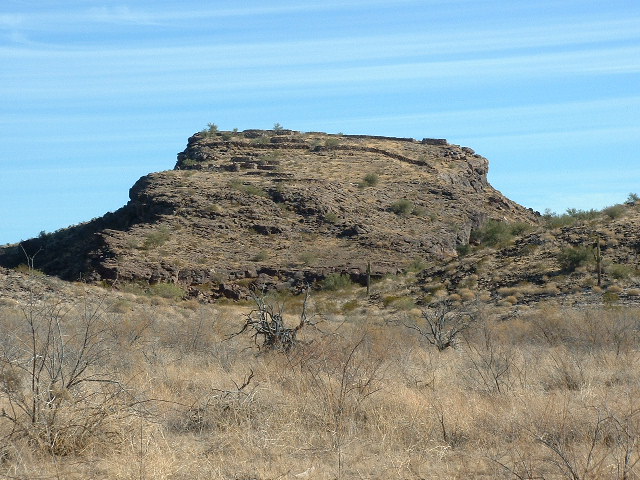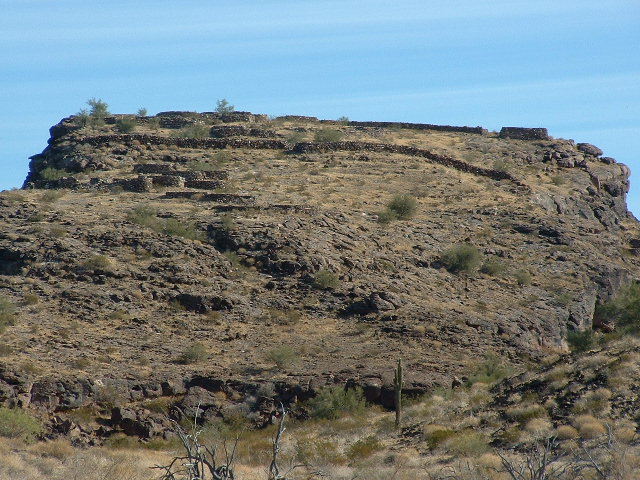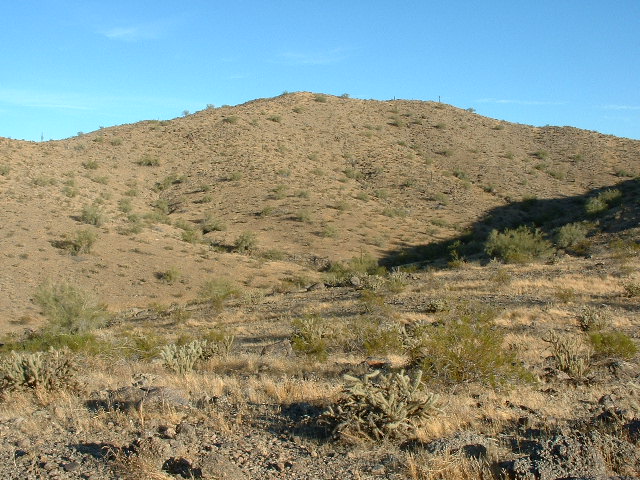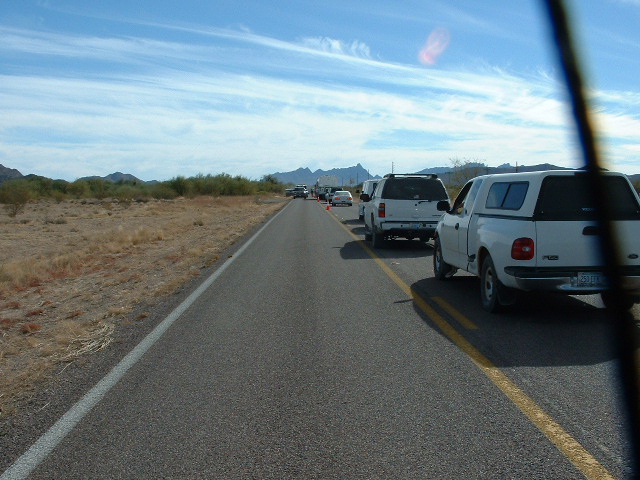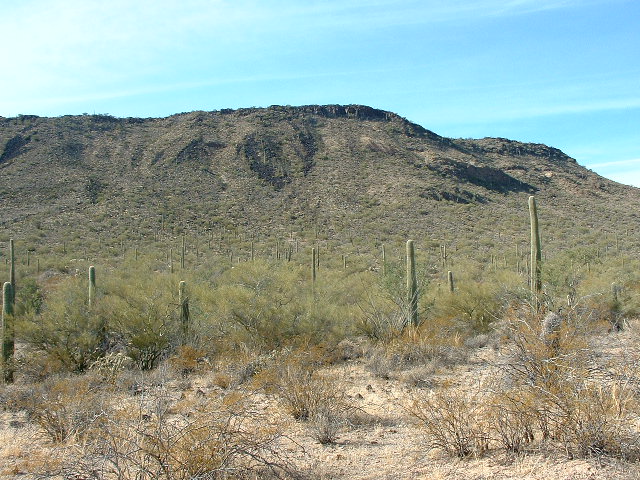One winter’s day back in 2006, I got away for a quick day of climbing. A break had come up in my construction work, so I figured I’d better take advantage of it.
Twice before, I had gone to climb a small peak near the town of Gila Bend, Arizona, where one of the eleven districts of the Tohono O’odham Indian Reservation is located. It is not contiguous with the main body of the reservation, but is separated by a 70-mile drive from the main part. It is called the Gila Bend Indian Reservation by the locals, but is known by the O’odham as the San Lucy District. Gila Bend is a town of about 2,000 population with few redeeming values, and the reservation sits immediately to the north of it.
I drove in the dark on Interstates 10 and then 8 for about 125 miles to get to Gila Bend. I made my way, still in the dark, past San Lucy Village (population 309) and then along Watermelon Road and Indian Road. These take you through large cultivated areas, then to the floodplain of the Gila River. By the way, the Gila River is the only river which crosses the entire state of Arizona. It enters in the east from New Mexico and finally flows into the Colorado River about 4 miles east of the city of Yuma. In very rare years, the river here can not only flow above-ground but can flood a swath of channel four to five miles wide. One must drive through this wasteland of dry riverbed past a feature called “Point of Rocks”, then a mile farther to the Fortaleza Indian ruins
Just south of the ruins is a benchmark called Petro, at 917 feet above sea level easily the lowest climbing objective on the TOIR list. I had climbed it with my wife Dottie on March 15, 2002.
There is only one true summit in this district, an insignificant bump near its northern boundary, with the designation Peak 1116. The next-lowest summit on the entire reservation is over 800 vertical feet higher. So the elevations here are an anomaly for the TOIR, that’s for sure.
The Fortaleza ruins sit about 200 feet above the floodplain. It is a site of special significance to the tribe, and a sign asks that you do not go up to the ruins. I have been to this area three times and have always respected their wishes. This next shot is a telephoto view of the site. You can click on the photo and enlarge it.
I drove past the ruins and parked farther north beyond that area. By the time I had readied my pack, it was already 8:00 a.m. I set out, crossing a series of small bumps and following ridges, heading north. There was surprisingly little vegetation here. I finally reached the mighty Peak 1116. With no sign of any previous visit, I left a cairn and register.
On the leisurely walk back from the peak, I phoned my old climbing partner Brian and his wife Linda to wish them a Happy New Year. It was good to reminisce about climbing while climbing. By the time I returned to the truck, almost 2 1/2 hours had passed.
I drove back through Gila Bend, then south on Arizona Highway 85 to the town of Ajo. There, I stopped at my favorite Mexican restaurant, Don Juan’s, and enjoyed their chicken enchiladas with mole sauce (highly recommended). For those of you who have never tried it, mole (pronounced mo-lay) sauce is made from chocolate and other spices. Delicious! I then set out again at around 1:00 p.m. and drove ten miles south to the village of Why. It was my intention to enter the main reservation there, then climb at least one more peak en route to Tucson. At the eastern edge of the village, I found that all traffic was stopped in both directions. There was quite a backup there on Highway 86.
Finally, they allowed us through on a dirt frontage road. There was no sign of a problem, but I surmised there had been some sort of traffic accident. Men wearing suits and carrying attaché cases were at the scene. And there were U.S. Border Patrol officers everywhere, one of whom was directing the flow of traffic with a huge automatic rifle slung over his shoulder. (I read in the Tucson paper the following morning that a BP officer had been driving west in the dark and had struck and killed a drunk pedestrian who was wearing dark clothing and walking on the highway. That had to have occurred at least 6 hours before I arrived at the scene.)
I drove 12 miles east on 86 and then 7 miles north on Indian Highway 34. I parked well off the road near the base of Peak 3010, which is across the valley to the west of the Gakolik Mountains.
It was so quiet and deserted there that I just left the truck open. Without a pack, I climbed the 800 feet to the summit, where I left a register, then descended the same way. I was back home before dark. That was my 375th peak on the TOIR project. Gadzooks, I was almost done! Less than 30 left to do.
We have a Facebook page, which you can check out at:
https://www.facebook.com/pages/Desert-Mountaineer/192730747542690

